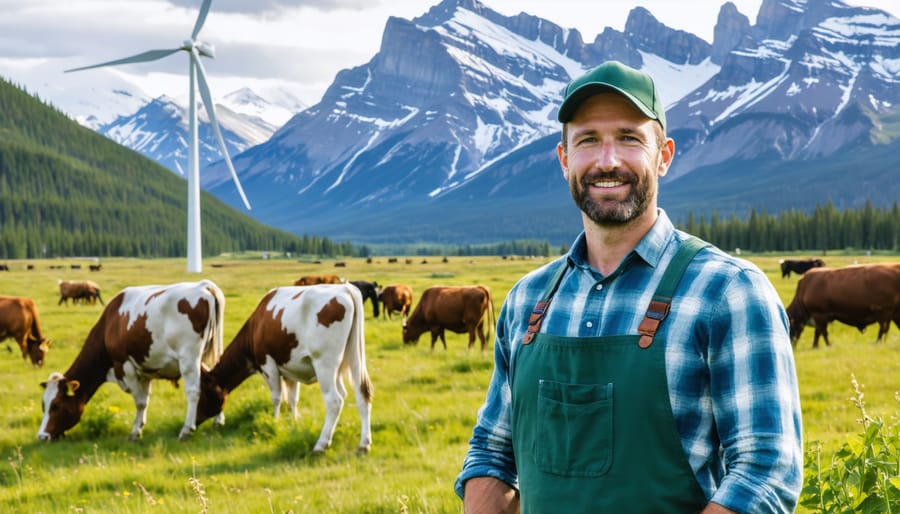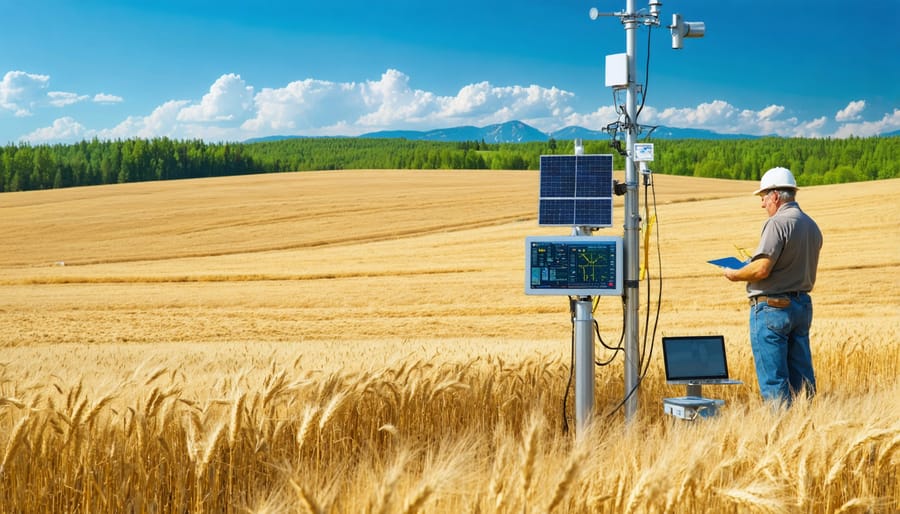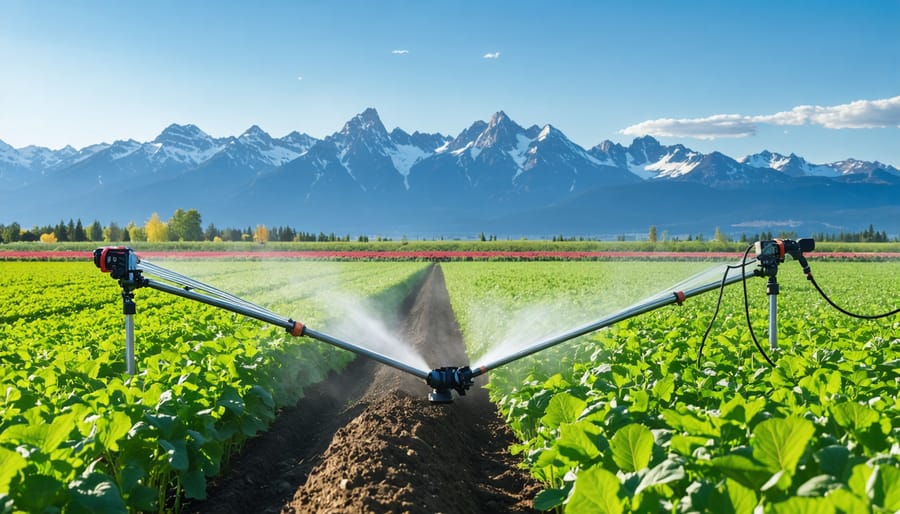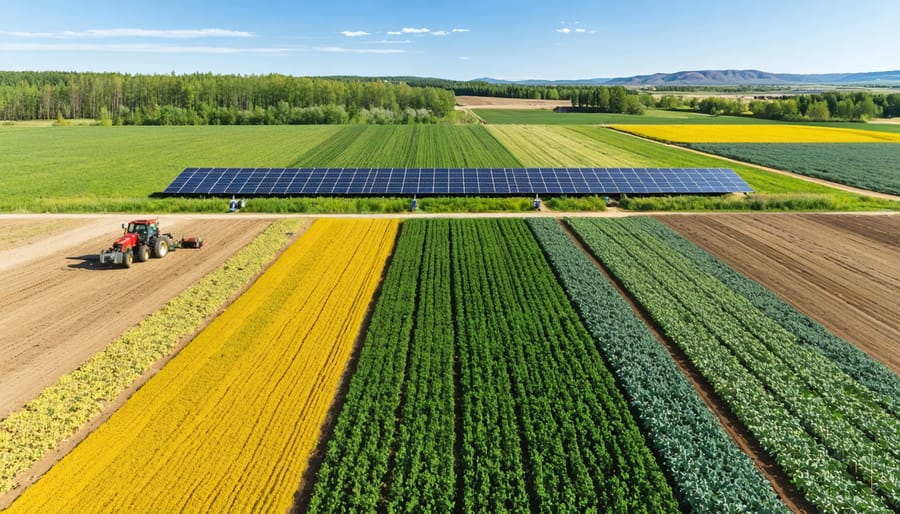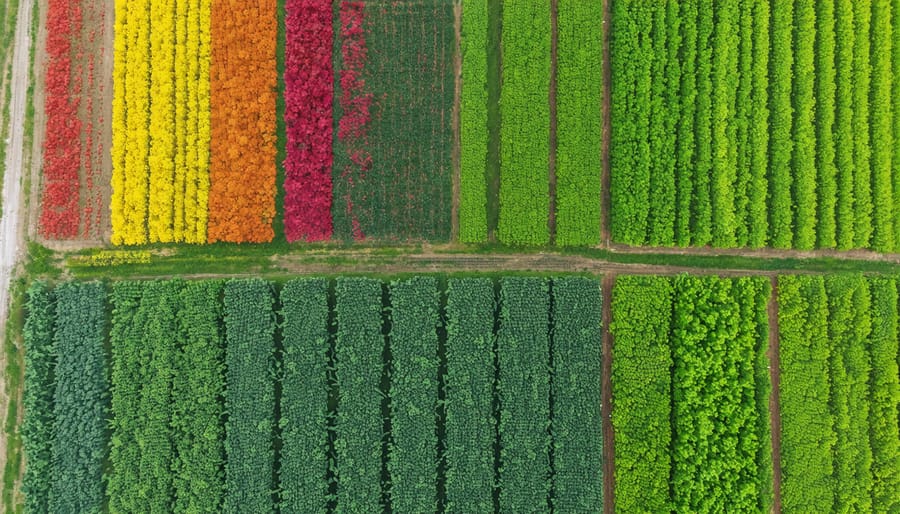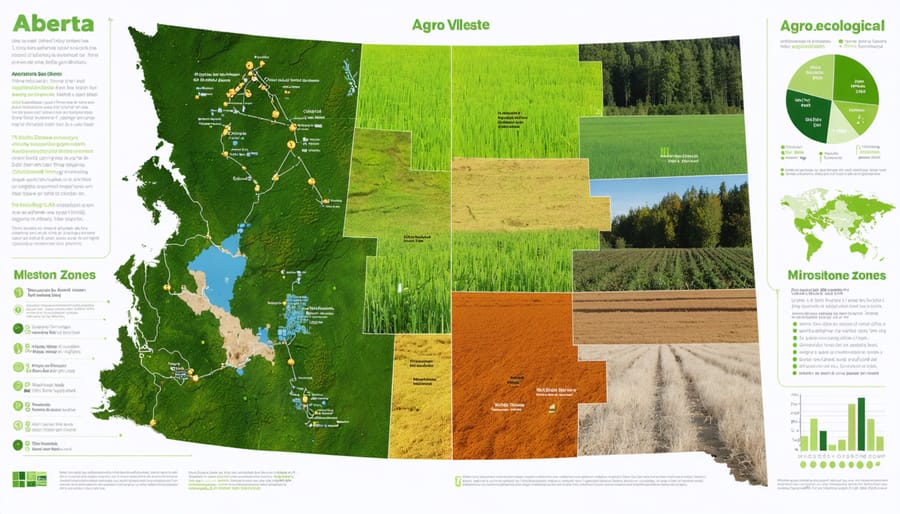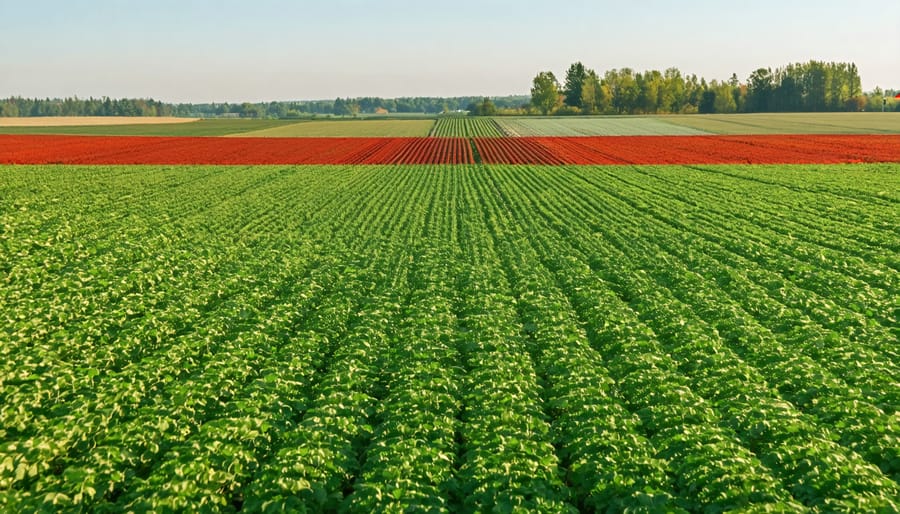Livestock farming’s carbon hoofprint is undeniable. Methane-belching cattle, land cleared for grazing, and emissions-intensive supply chains have made animal agriculture a leading contributor to climate change. In Alberta, where cattle outnumber people, livestock account for nearly half the province’s agricultural emissions.
Yet there is hope. Alberta farmers unite to pioneer climate-smart livestock practices that reduce emissions while bolstering their bottom line. From rotational grazing to anaerobic digesters that convert manure into green energy, Alberta’s ranchers are reimagining animal husbandry for a warming world.
This article explores the climate impact of livestock, the innovations taking root in Alberta’s pastures, and how shifting consumer appetites and government incentives are forging a more sustainable path forward – one that keeps Alberta’s agricultural heritage thriving in the age of climate action. The steaks have never been higher, but Alberta’s farmers are rising to the challenge.
The Livestock-Climate Change Connection

Methane from Cattle
Methane, a potent greenhouse gas, is a significant contributor to climate change, and cattle are one of the leading sources of methane emissions in livestock farming. When cattle digest their feed, they produce methane as a byproduct, which is released into the atmosphere through belching and flatulence. In Canada, the agricultural sector accounts for approximately 8% of the country’s total greenhouse gas emissions, with cattle being responsible for a substantial portion of that amount.
Alberta, as a major cattle-producing region, has an important role to play in addressing this issue. By implementing strategies such as improved feed management, pasture rotation, and the use of feed additives that reduce methane production, Alberta farmers can significantly decrease their cattle’s methane emissions. Adopting these practices not only benefits the environment but also has the potential to improve animal health and productivity, creating a win-win situation for farmers and the planet.
Emissions from Manure and Feed Production
Manure management and feed production contribute significantly to greenhouse gas emissions in livestock farming. Manure emits methane and nitrous oxide, potent greenhouse gases, during storage and decomposition. Growing livestock feed, such as corn and soybeans, often involves fertilizer use, leading to nitrous oxide emissions. Deforestation for pasture and feed cropland releases stored carbon and reduces carbon sequestration. Canadian research estimates that manure accounts for 12% of agricultural emissions, while feed production contributes 21%. Alberta farmers can reduce these emissions by implementing manure composting, anaerobic digestion, and improved feed crop management. Precision agriculture techniques, like targeted fertilizer application and cover cropping, can minimize feed-related emissions. Sourcing feed locally and using byproducts can also lower the carbon footprint. By optimizing manure and feed practices, farmers play a crucial role in mitigating the climate impact of livestock farming.
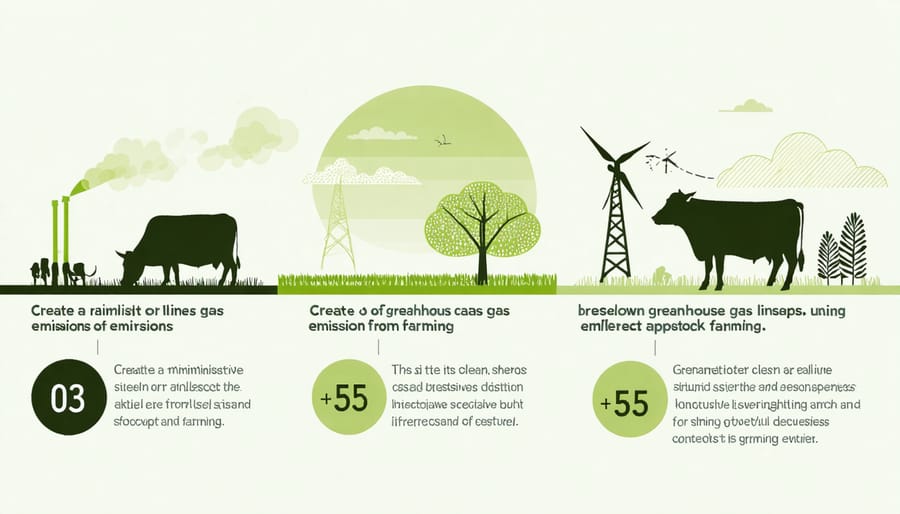
Climate-Smart Livestock Strategies
Optimizing Cattle Feed
Optimizing cattle feed is a powerful strategy for reducing methane emissions in livestock farming. By carefully adjusting the composition of cattle diets, farmers can significantly decrease the amount of methane produced during digestion. Research has shown that incorporating high-quality forages, such as alfalfa and legumes, can improve feed efficiency and reduce methane output by up to 30%. Additionally, supplementing diets with oils, tannins, and specific additives like 3-nitrooxypropanol (3-NOP) has demonstrated promising results in mitigating methane production.
Alberta farmers are already adopting these innovative feed strategies, with many reporting positive impacts on both emissions and animal performance. For example, a study conducted by the University of Alberta found that adding 3-NOP to cattle diets reduced methane emissions by up to 80% without compromising growth or milk production. By collaborating with nutritionists and feed experts, farmers can develop optimized rations tailored to their specific herds and production goals.
Implementing these feed optimization techniques not only benefits the environment but also supports the economic sustainability of livestock operations. Improved feed efficiency translates to lower feed costs and increased productivity, ensuring a viable future for Alberta’s cattle industry in the face of climate change challenges.
Rotational Grazing
Managed rotational grazing offers a promising approach for Alberta livestock farmers to reduce greenhouse gas emissions while enhancing pasture health. By strategically moving cattle between pastures, farmers can optimize grass growth, improve soil quality, and increase carbon sequestration in the soil. This practice allows pastures to recover between grazing periods, leading to deeper root systems that store more carbon. Additionally, well-managed pastures require less synthetic fertilizer, further reducing emissions.
Rotational grazing also contributes to healthier, more productive cattle, which can translate to reduced methane emissions per unit of meat or milk produced. By implementing this and other regenerative farming practices, Alberta farmers can play a vital role in mitigating the climate impact of livestock production. Adopting rotational grazing not only benefits the environment but also supports the long-term sustainability and resilience of our agricultural communities. With proper planning and management, this practice can be a win-win solution for farmers, their livestock, and the planet.
Manure Management Techniques
Proper manure management is crucial for reducing greenhouse gas emissions in livestock farming. One effective technique is to cover manure storage facilities, which can decrease methane emissions by up to 80%. Another strategy is to implement anaerobic digestion systems that capture methane for use as a renewable energy source. This not only reduces emissions but also provides a valuable resource for farm operations.
Composting manure is another way to minimize emissions while creating a nutrient-rich soil amendment. When done correctly, composting can reduce methane and nitrous oxide emissions by 50-80%. Applying manure to fields using injection or incorporation methods, rather than surface spreading, can also significantly reduce emissions and improve nutrient uptake by crops.
Lastly, adopting precision farming techniques, such as using GPS and soil testing to optimize manure application rates, can further reduce emissions and enhance soil health. By implementing these strategies, Alberta farmers can play a vital role in mitigating the climate impact of livestock farming while improving the sustainability and efficiency of their operations.
The Business Case for Sustainable Livestock Farming
Operational Efficiency Gains
Adopting sustainable livestock farming practices not only benefits the environment but can also lead to significant operational efficiency gains. By optimizing feed and pasture management, farmers can reduce waste and improve animal health, resulting in lower veterinary costs and increased productivity. Implementing precision agriculture technologies, such as GPS tracking and drones, allows for targeted resource allocation and minimizes labor expenses. Additionally, investing in renewable energy sources like solar panels or biogas digesters can dramatically cut long-term energy costs while reducing reliance on fossil fuels. These efficiency improvements ultimately translate to a healthier bottom line for farmers. As consumer demand for sustainably produced meat and dairy continues to grow, embracing eco-friendly practices can also open up new market opportunities and command premium prices. By working together as a community to share knowledge and resources, Alberta farmers can successfully transition to more efficient and profitable sustainable operations.

Accessing New Markets
Climate-conscious consumers are increasingly seeking sustainably produced goods, opening up new market opportunities for livestock farmers who adopt eco-friendly practices. By reducing greenhouse gas emissions, Alberta farmers can appeal to this growing segment of buyers who prioritize environmental responsibility. Certifications like “Grass-Fed” or “Carbon Neutral” can help differentiate products and command premium prices from climate-aware customers. Farmers can also explore direct-to-consumer sales, partnering with local retailers, or supplying restaurants that showcase sustainable ingredients. Online platforms and farmers’ markets provide additional avenues to reach these discerning buyers. Adapting to changing consumer preferences not only benefits the planet but can also unlock profitable new markets for forward-thinking livestock producers. As demand for sustainable products continues to rise, Alberta farmers who proactively address climate concerns will be well-positioned to thrive in the evolving marketplace.
Conclusion
In conclusion, livestock farming has a significant impact on climate change, but there are practical solutions available to mitigate these effects. By adopting sustainable practices like improved grazing management, feed optimization, and manure management, Alberta farmers can reduce their carbon footprint while maintaining productive operations. Investing in these strategies not only benefits the environment but also has the potential to increase efficiency and profitability in the long run.
The Alberta agricultural community has a unique opportunity to lead the way in sustainable livestock farming. By working together, sharing knowledge, and embracing innovation, farmers can create a more resilient and environmentally-friendly industry. Government support through incentives, research funding, and education programs can further encourage the adoption of emission-reducing practices.
As stewards of the land, Alberta farmers have a responsibility to prioritize sustainability for future generations. By taking action now to reduce the climate impact of livestock farming, they can contribute to global efforts to combat climate change while ensuring the long-term viability of their operations. The journey towards sustainable agriculture requires commitment and collaboration, but the rewards – for farmers, communities, and the planet – are well worth the effort.

